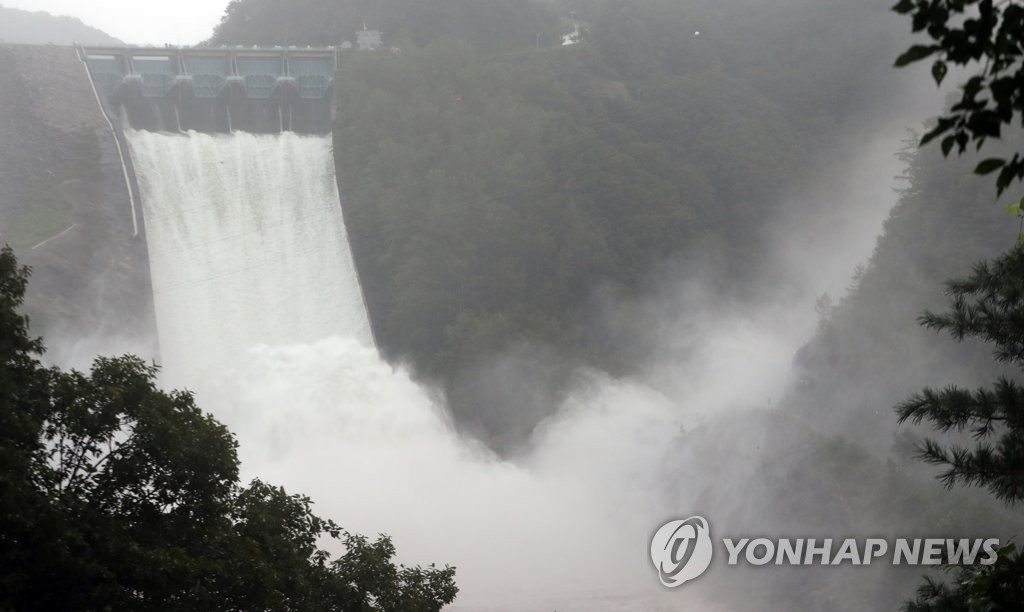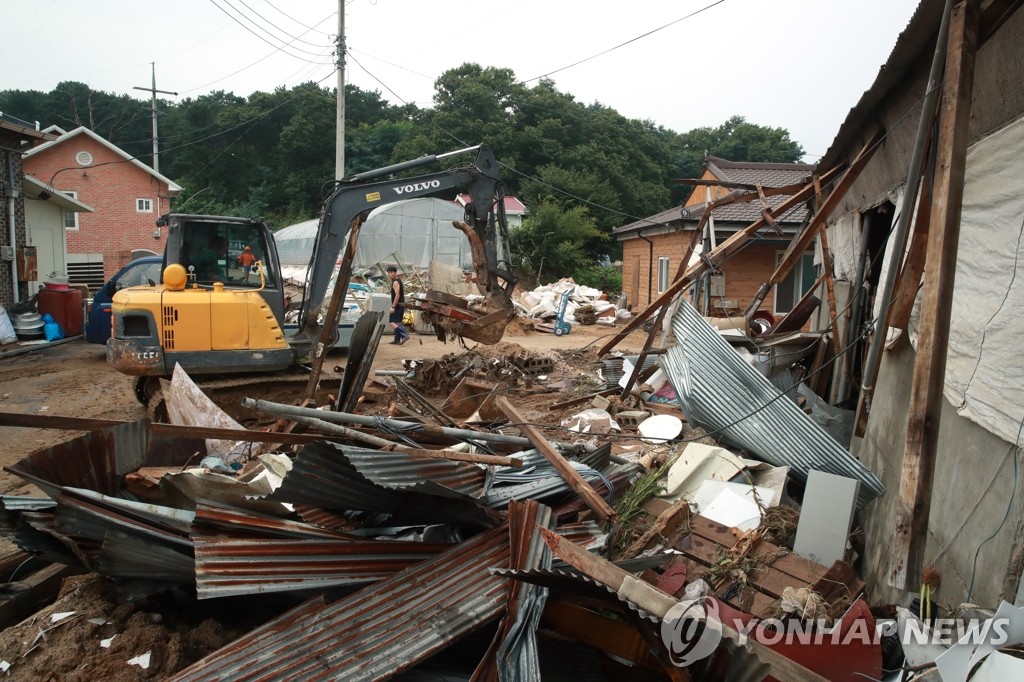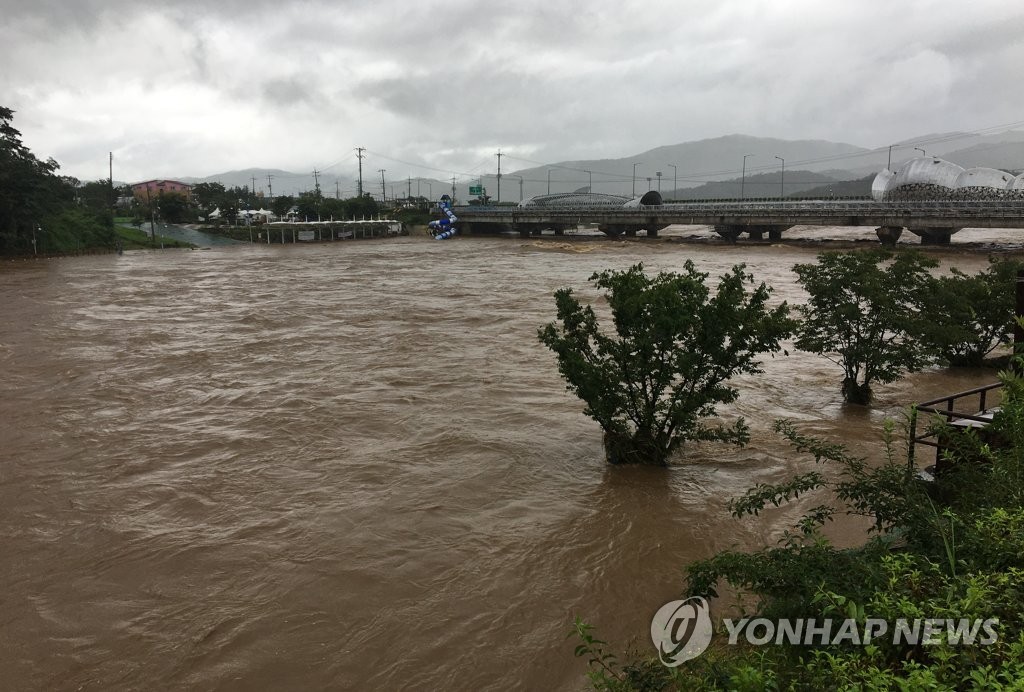- California Assembly OKs highest minimum wage in nation
- S. Korea unveils first graphic cigarette warnings
- US joins with South Korea, Japan in bid to deter North Korea
- LPGA golfer Chun In-gee finally back in action
- S. Korea won’t be top seed in final World Cup qualification round
- US men’s soccer misses 2nd straight Olympics
- US back on track in qualifying with 4-0 win over Guatemala
- High-intensity workout injuries spawn cottage industry
- CDC expands range of Zika mosquitoes into parts of Northeast
- Who knew? ‘The Walking Dead’ is helping families connect
Downpours continue to grip S. Korea, key dam opens floodgates
Damage from the heavy rain that has pounded South Korea’s metropolitan and central regions continued to increase Wednesday, prompting officials to open the floodgates at a major dam for the first time in three years.
The downpours had killed 15 and left 11 missing as of 6 a.m., according to the Central Disaster and Safety Countermeasure Headquarters. Nearly 1,600 were forced to leave their homes, with two-thirds of them based in the provinces of South and North Chungcheong.
Reports of damaged properties continued to rise, with damage reported at 4,281 private and public facilities across the country. Some 1,300 houses were submerged or buried, while damage was also reported at 705 warehouses and cattle sheds.
In addition to buildings, 936 roads and bridges also suffered damage from the heavy rain. A total of 277 landslides were reported, and essential facilities, such as waterworks, sewage lines and railways, were also affected.
Damage was also reported at a combined 6,128 hectares of agricultural land, and 300,000 cattle were killed, according to the ministry of agriculture.





Floodgates at Soyang River Dam in Chuncheon, Gangwon Province, release water for the first time in three years on Aug. 5, 2020, as water levels rose following recent heavy rain. (Yonhap)
To restore damaged facilities and help evacuees, the government has mobilized more than 48,800 rescue and volunteer workers as well as nearly 5,800 pieces of heavy equipment, such as excavators and water pumps.
While around 55 percent of damaged facilities have been temporarily restored, 37 roads, including Jamsu Bridge, which connects the southern and northern parts of the Han River in Seoul, remained closed. Six rail routes — including Chungbuk, Taebaek and Yeongdong — were partially or completely restricted.
Entry bans remained in place at 251 trekking routes at nine national parks as well as 16 underpasses and 93 parking lots adjacent to streams and rivers to prevent accidents.
To prevent flooding, major dams across the country began to discharge water as water levels quickly rose.
The Korea Water Resources Corp. began to release water from Soyang River Dam in Gangwon Province at 3 p.m. at a speed of 3,000 tons per second.
The plan is forecast to raise water levels at the Han River by up to 2 meters, with the discharged water arriving near Han River Bridge in central Seoul 16 hours later.
But officials said the water is unlikely to cause additional damage. The dam, built in 1973, has discharged water 14 times, with the latest release taking place in August 2017.
Earlier in the day, Prime Minister Chung Sye-kyun ordered the Ministry of Interior and Safety to swiftly review a proposal to declare Gyeonggi and Chungcheong provinces as special disaster zones.
Special disaster zones are designated upon requests by provincial governors. When a request is deemed reasonable by the interior ministry, it is then approved by the prime minister and the president.











